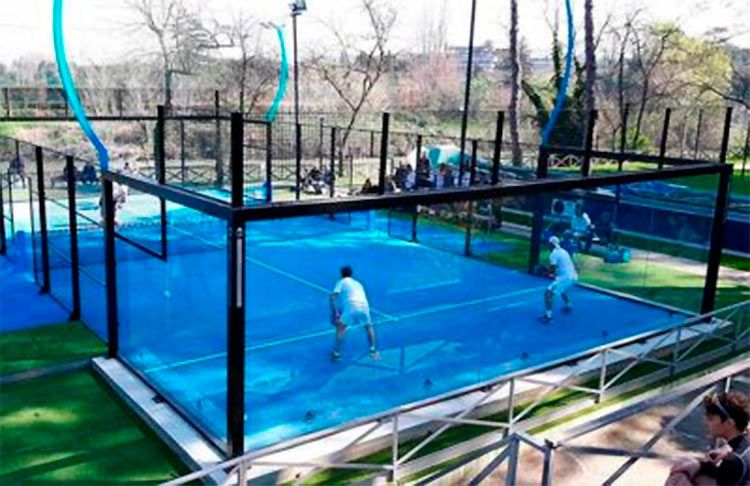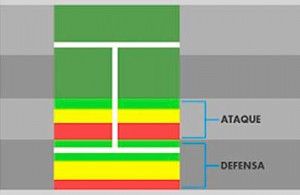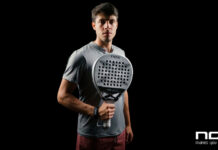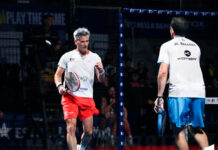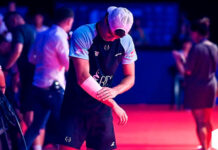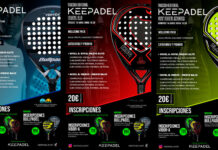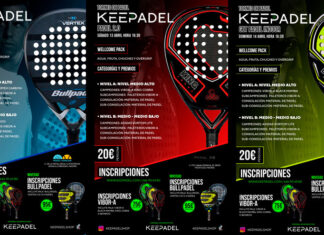Padel World Press .- To begin this analysis, we will emphasize that we must try to spend as much time as possible in the attack area because it is in the network where they earn the parties. The zone of transition it would be an intermediate space in which we should try to be only in passing, as a transition towards defense or attack positions (as appropriate). It is often called 'Swampy Zone' because it is a "dead" area in which we are not well placed to defend or attack and, therefore, remain in it increases the risk of losing many points.
Within the defense zones and the attack zone, several sub-zones could be defined and, in each one of them, we would have to proceed differently. In the following image you will see the 3 attack subzones and the 3 defense subzones in green, yellow and red colors. Green represents the ideal sub-zone, yellow represents the alert and red represents the danger zone.
Defense zone:
- 1 defense subzone (red zone): It would go from the back wall to a meter in front of it. We do not want to be in it because if we defend a lot in it, it is most likely that we will lose the point. We will only use defensive blows, especially balloons or soft balls placed near the net (little ones), in order to have time to regain position.
- 2 defense subzone (yellow zone): It goes from the red subzone to a little before the service line (half a meter before approx). It is still not the ideal place to defend, but it is something better than the previous one. The player who is in the bottom of the track He may use defensive and offensive medium blows while waiting for the return. Therefore, although we will use eminently defensive blows, if we are well placed and the opponents leave gaps or are going up to the net, we can use a more offensive blow with our shovel as, for example, the passing.
- Defense subzone 3 (green zone): It would range from yellow to 1 meter in front of the service line approximately. Defense from here is easier. The blows that we will use can be more offensive and, in fact, we can even think about winning the net against our rivals, counterattacking with more angled blows or looking for passing to move to the attacking position.
Attack Zone:
- Subzone of attack 1 (red zone): It would go from defense subzone 3 to 2 meters in front of the net. In it, the most normal thing is that our attack does not cause damage to the opponent, unless we have a great topspin shot by 3 to hit from far behind and achieve a frank balloon ... That is why we will make more hits conservative, looking more for direction (ball well placed) than speed. As you can guess, the hit that we should execute the most in this area would be the tray deep at low speed or, if we play on the reverse, you can also use the tops to the fence, actions that always allow us to recover the network.
- 2 attack subzone (yellow zone): It goes from the red subzone to 2 meters towards the network. Trays, faster volleys and power shots will be used but still without much risk because we are not yet in the green zone, where we can be more aggressive and try to define the point.
- Subzone of attack 3 (green zone): It is approximately 1 meter and a half from the network. In it we will take more risks to define since, by being closer to the network, we will be able to overcome it. Strokes can take more speed and spin to win points and spikes can be final. It is the sub-zone of which it is often said that it is where we have to be as long as possible if we want to win the game.
In short, we have to try to play in an orderly fashion, develop an intelligent game scheme and have clear ideas to know how to act in each subzone of the track to have the greatest possible success in each of them. The objective: to be always well positioned in the attack and green defense subzones, from which it will be easier to win the game.
I hope it has helped you and… Until next time !!
* You can follow all the news of the world of paddle in our profiles of Facebook y Twitter as well as subscribe to our Newsletter .

